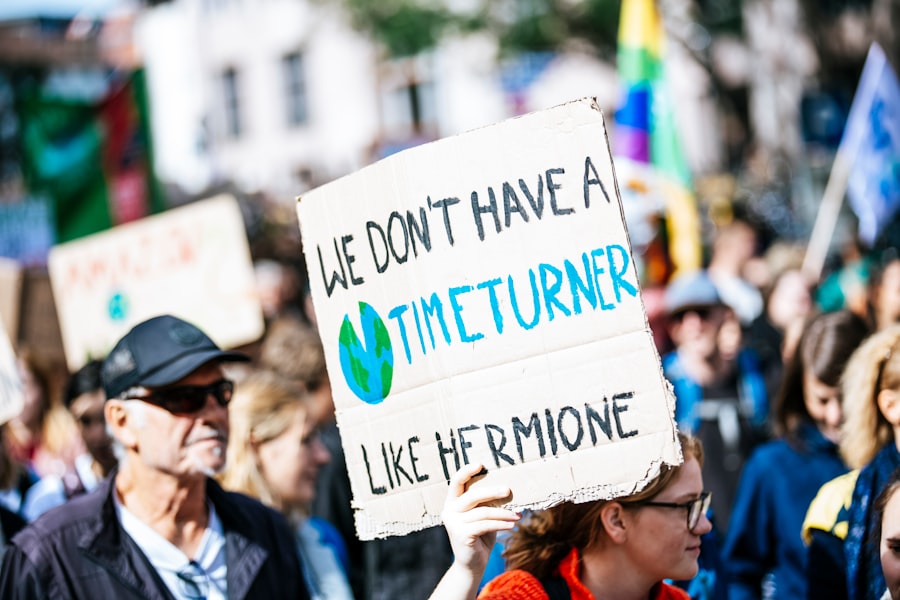After undergoing a cosmetic procedure, it’s essential to grasp the intricacies of the aftercare process. This phase is crucial for ensuring optimal results and minimizing any potential complications. You may find that the aftercare instructions provided by your practitioner are tailored specifically to your treatment, but there are common principles that apply across various procedures.
Understanding these guidelines can empower you to take charge of your recovery and enhance the effectiveness of your treatment. The aftercare process typically begins immediately following your procedure. You might experience some swelling, redness, or discomfort, which is entirely normal.
Familiarizing yourself with what to expect can alleviate anxiety and help you prepare mentally for the healing journey ahead. It’s important to remember that your skin is in a sensitive state, and how you care for it during this time can significantly influence your results. By adhering to the aftercare instructions, you can promote healing and achieve the best possible outcome from your treatment.
Key Takeaways
- Aftercare process is crucial for optimal results and to minimize potential side effects after a cosmetic treatment.
- Managing discomfort and redness can be achieved through the use of recommended products and techniques provided by the provider.
- Protecting the treated area from sun exposure is essential to prevent pigmentation issues and ensure proper healing.
- Harsh skincare products should be avoided to prevent irritation and potential damage to the treated skin.
- Keeping the skin hydrated is important for overall skin health and to support the healing process after a cosmetic treatment.
Managing Discomfort and Redness
Relieving Discomfort
You may find that applying a cold compress to the affected area can provide immediate relief. This simple technique can help reduce swelling and soothe any irritation you might be feeling. Additionally, over-the-counter pain relievers, such as ibuprofen or acetaminophen, can be effective in managing discomfort, but always consult with your provider before taking any medication.
Reducing Redness
Redness is another common side effect that you may encounter post-treatment. While it can be alarming to see your skin looking different than usual, it’s important to remember that this is often a temporary reaction. You might consider using gentle, soothing products designed for sensitive skin to help calm the area. Look for ingredients like aloe vera or chamomile, which are known for their anti-inflammatory properties.
Promoting a Quicker Recovery
Keeping your skin cool and avoiding hot showers or strenuous exercise can also help minimize redness and promote a quicker recovery. By following these simple tips, you can help your skin recover quickly and comfortably after a procedure.
Protecting the Treated Area from Sun Exposure

Sun protection is paramount in the aftercare process, especially after cosmetic procedures. Your skin will be more vulnerable to UV rays during the healing phase, making it essential to shield it from sun exposure. You should consider wearing a broad-spectrum sunscreen with an SPF of at least 30 whenever you step outside.
This protective measure not only helps prevent sunburn but also reduces the risk of hyperpigmentation, which can occur when healing skin is exposed to sunlight. In addition to sunscreen, wearing protective clothing can further safeguard your treated area. A wide-brimmed hat or sunglasses can provide additional coverage and minimize direct sunlight on your face. If possible, try to avoid sun exposure during peak hours, typically between 10 a.m.
and 4 p.m., when UV rays are strongest. By taking these precautions, you can help ensure that your skin heals properly and maintains its desired appearance.
Avoiding Harsh Skincare Products
| Skincare Product | Potential Harsh Ingredients | Alternative |
|---|---|---|
| Foaming Cleanser | Sodium lauryl sulfate | Cream or gel cleanser |
| Exfoliating Scrub | Microbeads | Chemical exfoliant |
| Toner | Alcohol | Alcohol-free toner |
| Acne Treatment | Benzoyl peroxide | Salicylic acid |
In the days and weeks following your procedure, it’s crucial to avoid harsh skincare products that could irritate your sensitive skin. You may be tempted to reach for your usual products, but now is the time to reassess what you apply to your face. Ingredients like retinoids, alpha hydroxy acids (AHAs), and exfoliants can exacerbate irritation and delay healing.
Instead, opt for gentle cleansers and moisturizers that are free from fragrances and alcohol. You might also want to consider simplifying your skincare routine during this period. Fewer products mean less chance of irritation, allowing your skin to focus on healing without unnecessary stressors.
Look for products labeled as hypoallergenic or formulated specifically for post-procedure care. By being mindful of what you put on your skin, you can create an environment conducive to healing and ensure that your results are as beautiful as possible.
Keeping the Skin Hydrated
Hydration plays a critical role in the aftercare process, as it helps maintain skin elasticity and promotes healing. You should prioritize keeping your skin well-hydrated by drinking plenty of water throughout the day. Staying hydrated from within can significantly impact how your skin looks and feels during recovery.
Additionally, consider using a hydrating serum or moisturizer that contains ingredients like hyaluronic acid or glycerin, which are known for their ability to attract moisture. Incorporating a humidifier into your environment can also be beneficial, especially if you live in a dry climate or during winter months when indoor air tends to be less humid. This added moisture in the air can help prevent your skin from becoming dry and flaky, which is particularly important during the healing process.
By focusing on hydration both internally and externally, you can support your skin’s recovery and enhance its overall appearance.
Monitoring for Potential Side Effects

As you navigate through the aftercare process, it’s essential to remain vigilant about monitoring for potential side effects. While most individuals experience only mild discomfort and redness, some may encounter more significant reactions that require attention. You should familiarize yourself with the signs of complications such as excessive swelling, prolonged pain, or unusual discharge from the treated area.
If you notice any of these symptoms, don’t hesitate to reach out to your provider for guidance. Keeping a close eye on your skin’s condition can help you catch any issues early on. Documenting changes in your skin through photos or notes can also be helpful when discussing concerns with your provider during follow-up appointments.
Remember that open communication with your healthcare professional is key; they are there to support you through this process and address any worries you may have about your recovery.
Following Up with the Provider
Following up with your provider is an integral part of the aftercare process that should not be overlooked. These appointments allow you to discuss your healing progress and address any concerns that may have arisen since your procedure. Your provider will assess how well your skin is responding to treatment and make recommendations for any adjustments needed in your aftercare routine.
During these follow-up visits, don’t hesitate to ask questions about what you’re experiencing. Whether it’s about managing discomfort or understanding what changes are normal during recovery, your provider is there to help guide you through this journey. They may also provide additional tips tailored specifically to your situation, ensuring that you have all the information necessary for a successful recovery.
Long-Term Maintenance and Touch-Up Treatments
Once you’ve completed the initial aftercare process, long-term maintenance becomes essential for preserving the results of your treatment. Depending on the procedure you underwent, you may need periodic touch-up treatments to maintain your desired appearance over time.
Incorporating a consistent skincare routine into your daily life will also play a significant role in maintaining results. This routine should include sun protection, hydration, and gentle cleansing tailored to your skin type. By prioritizing skincare even after the initial healing phase, you can extend the longevity of your results and keep your skin looking vibrant and healthy for years to come.
In conclusion, understanding the aftercare process is vital for anyone who has undergone a cosmetic procedure. By managing discomfort and redness effectively, protecting your skin from sun exposure, avoiding harsh products, keeping hydrated, monitoring for side effects, following up with your provider, and committing to long-term maintenance, you can ensure that you achieve the best possible results from your treatment. Taking these steps will not only enhance your recovery but also empower you to embrace your new look with confidence.
Aftercare for facial laser hair removal is crucial to ensure optimal results and minimize any potential side effects. One related article that provides valuable information on this topic can be found at https://www.inlaserhairremoval.com/sample-page/. This article discusses the importance of following post-treatment instructions, such as avoiding sun exposure and using gentle skincare products. By following these guidelines, individuals can help maintain the smooth and hair-free results of their facial laser hair removal treatment.
FAQs
What is facial laser hair removal?
Facial laser hair removal is a cosmetic procedure that uses a laser to target and destroy hair follicles on the face, reducing or eliminating unwanted facial hair.
What is aftercare for facial laser hair removal?
Aftercare for facial laser hair removal typically involves keeping the treated area clean and protected from sun exposure, avoiding certain skincare products and treatments, and following any specific instructions provided by the treatment provider.
How should I care for my skin after facial laser hair removal?
After facial laser hair removal, it is important to keep the treated area clean and moisturized, avoid sun exposure, and refrain from using harsh skincare products or treatments that could irritate the skin.
Can I wear makeup after facial laser hair removal?
It is generally recommended to avoid wearing makeup immediately after facial laser hair removal to allow the skin to heal. Once the skin has healed, it is important to use gentle, non-irritating makeup products.
How long does it take for the skin to heal after facial laser hair removal?
The healing time after facial laser hair removal can vary depending on the individual and the specific treatment. In general, the skin may be red and sensitive for a few days to a week after the procedure.
Are there any specific products I should avoid after facial laser hair removal?
After facial laser hair removal, it is typically recommended to avoid using harsh skincare products, exfoliants, and certain acne medications that could irritate the skin. It is important to follow the specific aftercare instructions provided by the treatment provider.






